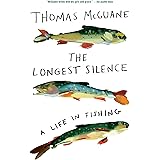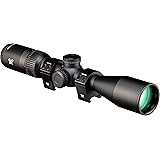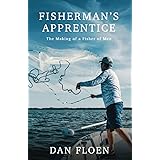Learning to sustain yourself outdoors is a valuable skill. The video above shows a fun, real-world example. It highlights how to catch, clean, and cook fish. This is essential for survival or simply enjoying nature.
Fishing can provide vital sustenance. It offers fresh protein in the wilderness. Knowing these steps ensures a successful outdoor experience. This guide expands on the video’s concepts.
Mastering the Catch: Techniques for Freshwater Fish
Catching fish is the first step. The video crew used simple methods. They targeted smaller freshwater species. These include perch, sunfish, and small bass.
These fish are often called panfish. They are abundant in many lakes and rivers. Panfish are great for beginners to target. They are also excellent table fare.
Choosing Your Bait and Lures
Bait selection is very important. The video mentions a “little wormy.” Nightcrawlers or red worms are classic choices. They attract a wide variety of fish.
A “wacky worm” was also used. This is a specific soft plastic lure. It is rigged through its middle. This creates a unique action in the water. It often entices bass.
Another effective choice was a “crawfish imitation jig.” Crayfish are a natural food source for many fish. A jig mimicking them can be deadly. It is especially good for bass and larger panfish.
The “trout magnet” is a tiny jig. It is designed for trout. However, it can catch many small fish. This includes sunfish and perch. It is a versatile lure.
Basic Fishing Setup
A simple spinning rod and reel works well. Light line is often preferred. Six to eight-pound test line is common. A small hook (size 6 or 8) is usually sufficient.
A bobber can help. It shows bites visually. It also keeps your bait at the right depth. A small weight might be needed. This helps cast your bait further.
Where to Find Fish
Fish often gather in specific spots. Look for cover like submerged logs. Weeds and rock piles also attract fish. Deeper holes in a cove can hold them. The video shows fishing along a rocky bank.
Moving slowly along the shoreline helps. Cast your line to different areas. Pay attention to any bites. Patience is key when fishing.
Cleaning Your Catch: From Water to Plate
Once you catch a fish, cleaning is next. The video shows the cleaning process. It is important to do this quickly. This preserves the freshness of the meat.
A sharp knife is your most important tool. A small, flexible fillet knife works best. A cutting board or flat surface is also helpful. Always be careful when handling knives.
Step-by-Step Fish Cleaning
-
Rinse the Fish: Wash off any dirt. This removes loose scales or slime.
-
Scale or Skin: Panfish can be scaled. Use the back of your knife. Scrape from tail to head. Alternatively, you can skin them. Make a cut behind the head. Pull the skin off with pliers.
-
Gut the Fish: Make a shallow cut. Start from the vent. Cut up towards the head. Open the belly cavity carefully. Remove all internal organs. Discard them properly.
-
Rinse Again: Rinse the cavity thoroughly. Remove any blood or remaining entrails. The fish is now ready for cooking.
For larger fish, filleting is an option. This removes the meat from the bones. It results in boneless portions. This process requires more practice. It is worth learning for bigger catches.
Cooking Your Fish: Simple Outdoor Recipes
Cooking freshly caught fish is a highlight. The video crew used “classic Pam and meat magic.” This suggests frying in oil. A simple seasoning blend adds flavor. Outdoor cooking is a rewarding experience.
Basic Pan-Frying Method
This is one of the easiest ways to cook fish. It works well with panfish. The small size makes them cook quickly.
-
Heat Your Pan: Place a cast-iron skillet or frying pan over a fire. A portable stove works too. Add cooking oil or spray. Pam is a popular choice for this.
-
Season the Fish: Sprinkle your cleaned fish with seasoning. Salt and pepper are essential. A “meat magic” blend adds more flavor. Paprika, garlic powder, and onion powder are good additions.
-
Cook Until Golden: Place the fish in the hot pan. Cook for 3-5 minutes per side. Cook until the flesh is opaque. It should flake easily with a fork. Small fish cook very fast.
Ensure the fish is cooked thoroughly. This prevents foodborne illness. Overcooking can make fish dry. Keep an eye on it while cooking.
Other Simple Cooking Ideas
Foil Packet Cooking: Wrap cleaned fish in foil. Add butter, herbs, and lemon slices. Cook directly on coals. This steams the fish. It keeps it moist and flavorful.
Roasting Over Fire: Skewer whole fish on a stick. Roast slowly over an open flame. This method is very primitive. It offers a smoky taste. Rotate frequently for even cooking.
Beyond Fish: Foraging for Wild Edibles
The video briefly highlights foraging. Wild blueberries were mentioned. They provide “quick energy” for survival. Learning about wild edibles is a crucial survival skill.
Identifying Wild Blueberries
Wild blueberries grow on small bushes. They typically ripen in summer. Berries are dark blue or purplish. They have a small crown on the end. Always confirm identification before eating any wild plant.
Blueberries are packed with antioxidants. They offer natural sugars. This provides an energy boost. They are a welcome find during a long day outdoors.
Other Common Wild Edibles
Many wild plants are edible. Dandelions are common. Their leaves can be eaten raw or cooked. Cattail shoots are also edible. They taste like cucumber.
Always carry a reliable field guide. This ensures proper identification. Never eat a plant unless you are 100% sure it is safe. Some plants are highly poisonous.
The Survival Mindset: Resourcefulness and Resilience
The video emphasizes a survival mindset. “We don’t eat unless we kill. Or catch.” This highlights self-sufficiency. It teaches resourcefulness. It builds confidence in outdoor settings.
Being prepared is crucial. This includes having basic gear. Knowing how to use it is also vital. Learning diverse skills helps. This includes fishing and foraging.
Patience is another key trait. Fishing requires waiting. Foraging requires searching. Embracing challenges makes you stronger. This builds true outdoor resilience. Surviving off fish is a rewarding endeavor.








